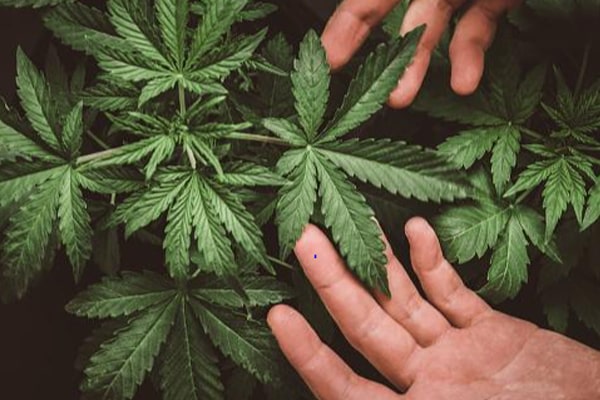How to Use the Screen of Green (SCROG) Method for Growing Weed Seeds: A Step-by-Step Guide
Legalization has swept America and opened the door for people to grow cannabis.
Naturally, its medicinal benefits have attracted usage across the board. But not everyone wants to buy weed at a dispensary; there’s so much fun and pleasure in growing your remedy for yourself, giving your plants the care they deserve from seed to harvest.
Thus, at the root of everything lies growing—cannabis must be cultivated in the best environments and cost-effectively. Whether a professional or hobby grower, you want to use techniques that give you optimal results.
The Screen of Green, or SCROG, is one of the best techniques to cultivate marijuana. Our discussion demystifies SCROG, shows you how to use it, and examines its benefits.
What Is SCROG?
Let’s begin by defining Scrogging before exploring its usage details. SCROG is a marijuana plant training method that involves using screens suspended over cannabis plants. The grower weaves cannabis stems through this screen’s mesh as plants grow horizontally.
Gradually, the weaving produces a canopy that covers the mesh to expose more bud sites to light and provide an even flower cover. Eventually, a “sea” of identical-sized substantial buds emerges. This technique is ideal for cultivating cannabis indoors to maximize yields per square foot.
Advantages of Using SCROG
Using SCROG has many benefits. Below are some pros of using it to cultivate your cannabis.
- Better light exposure. Plants growing under this canopy get maximum light exposure. Most untrained plants have main colas rising above other colas, forcing the light rig to remain above this point. Inversely, the lighting rig can hang directly above all the flowers in a SCROG setting.
- Higher yields. This technique also exposes buds to maximum light that enables them to maximize their photosynthetic potential. This way, their size and resin production increase.
- Aeration. Better aeration is another benefit of growing cannabis using SCROG. The horizontal screen of green gets sufficient airflow above and below the covering. Adding a fan boosts aeration, further reducing fungal pathogen risk.
- Maximum use of space. Many cultivators receive higher production levels in small spaces rather than when growing untrained plants.
Essentials of Using the SCROG Method
So, how do you use SCROG in your indoor marijuana cultivation? Below is the process’s complete coverage.
Strain Selection
You should consider your cannabis strain before using SCROG. Select a strain that stretches easily for easy weaving without risking damage. We recommend using Sativa-dominant strains because they’re more flexible.
Screen Implementation
You must consider your screen materials before scrogging your plants. The market offers different screen materials like metal, plastic netting, or rope. These materials must be at least 2 inches squared and strong enough to support the heavy plant buds.
Additionally, use posts or walls to secure and hold your screen in place. We recommend placing the net about 7-12 inches above the seedlings and then allowing them to grow through the holes.
Plant Topping
Start topping the highest nodes to distribute additional growth to other stems after your marijuana plants have developed at least five nodes. This distribution encourages horizontal growth. Do your topping in your plants’ vegetative phase.
Plant Weaving
Start redirecting your plants into the nearby openings as they grow through the screen. However, don’t tuck the seedlings towards the holes directly over them. As your plants increase, they should have at least 10 to 20 branches going through the netting.
Start weaving the branches above and below the screen structure, ensuring it’s secure enough to hold the weight. Avoid crowding holes with branches lest you might interfere with light exposure and airflow.
Plant Trimming
Trimming is another vital SCROG element to address. After the plants form an even canopy, trim their bottom stems that don’t receive light. It’s necessary because, otherwise, the light can’t reach the lower stems; they use the nutrients that should benefit the upper canopy branches. Trimming lower stems lets energy flow to the upper buds for better development and boosts air circulation.
Monitoring and Maintenance
Monitor and maintain your plants because SCROG significantly stresses plants. So, minimize your weaving sessions to once weekly and water the weed directly after every weaving session.
Only water your weed when its topsoil dries. Remember to use a solid nutrient base to feed your marijuana and promote its growth. We also advise checking your scrogged plants daily to ensure they’re healthy.
Tips for Successful Scrogging
Now that you know how to scrog your weed plants, here are actionable success tips to improve your productivity and avoid harming the crops.
Choose the Correct Genetics
Your seed genetics significantly affect your final yields. Good SCROG practice without the best genetics will yield little results because cannabis genetics vary. Thus, get seeds with the best genetics for a good head start.
We recommend choosing strains with moderate flowering stretch to fill your covering and maximize light distribution. This way, you will enjoy a bumper harvest, especially when growing a single plant at a time. It’s even more beneficial if you get sativa strains with a moderate height.
Avoid Premature Scrogging
Understanding the timing is vital because scrogging your plants prematurely could expose them to stress levels they can’t handle safely. Topping your plants too early exposes them to severe stunting and might even kill them.
Avoid training any plant until it has developed at least four or five nodes. It’s also necessary to apply wise judgment, especially if you are experienced, to know which plants can bear high-level stress. Finally, give your plants enough time to recover, at least two weeks. Use your experience and judgment to determine the ideal time before topping them again.
Proper Plant Feeding and Watering
Proper plant feeding and watering are essential for successful SCROG. This requirement applies equally irrespective of where you grow cannabis—in terraces or on your balcony. Cannabis experts at AskGrowers.com recommend watering your plants after every weaving to reduce stress levels. Besides, follow your regular watering pattern and water the plants when the topsoil is dry.
We also suggest using the most holistic and sustainable approach to feed your weed. For instance, you can use organic nutrients to reduce chemical runoffs from your plantation. This method can eliminate nutrient lockout and overfeeding, producing clean, natural cannabis products.
Supply Good Airflow
Pay attention to your plants’ airflow to succeed in your SCROG venture. As a canopy develops over the screen, the risk of humidity building inside and below the screen increases. Increased humidity decreases fresh air circulation, creating a fertile breeding ground for pathogens and pests that can destroy your entire harvest.
Our experts recommend using a solid ventilation system with at least an inline fan to draw fresh, clean air into your growing space. You may also strategically place oscillator fans to keep moving around your plants’ base and canopy.
Select the Right Pots
Lastly, mind the grow pots you use. While traditional plastic pots may work well, we recommend fabric pots because they allow more fresh air to reach your marijuana’s root area. Consequently, your plants enjoy more oxygen for easier root respiration.
Additionally, your cannabis roots automatically prune themselves when they reach the edge of an air/fabric pot with the highest oxygen levels. This way, you no longer need to worry about plants becoming root-bound.
Closing Remarks
We hope our guide has provided all the information you need about the Screen of Green cannabis growing. It’s up to you to utilize this valuable information to improve your crops and yields. Don’t stop on the achieved and always try to get better at cannabis growing; the plants will reward you with more generous harvests every round.
Lana Braslavska, a cannabis expert and writer at AskGrowers, is the author of this article. Lana is keenly interested in cannabis cultivation methods and is always happy to share her findings and innovative discoveries in this area to help consumers grow healthier yields.
Follow SuperbHub on Free Time For More Updates On Celebrity Biography, Articles, News, and Entertainment.
Recent News
-

Duane Chapman Is Now Engaged To Girlfriend Francie Frane, Had Lost Wife 10 Months Earlier
-

Katherine Schwarzenegger Pregnant With Her First Child With Husband Chris Pratt
-

Chris Cuomo's Son Mario Tested Postive For Coronavirus
-

Kodak Black And NBA YoungBoy, Dissing One Another Via Social Media
-

Maeve Kennedy McKean, Robert F. Kennedy's Granddaughter, is Missing Along With Her Son
Entertainment
-

The Evolution of Entertainment: Online Casting Calls Redefining the Industry
-

Mamoudou Athie's Must-Watch Performances in the Movies and TV Series
-

Try These Unique Forms of Entertainment When You've Exhausted All Options
-

7 Best Movies on Netflix This Week
-

Campus Grooves: Exploring Music Festivals in American Colleges
 Source: Pexels
Source: Pexels




